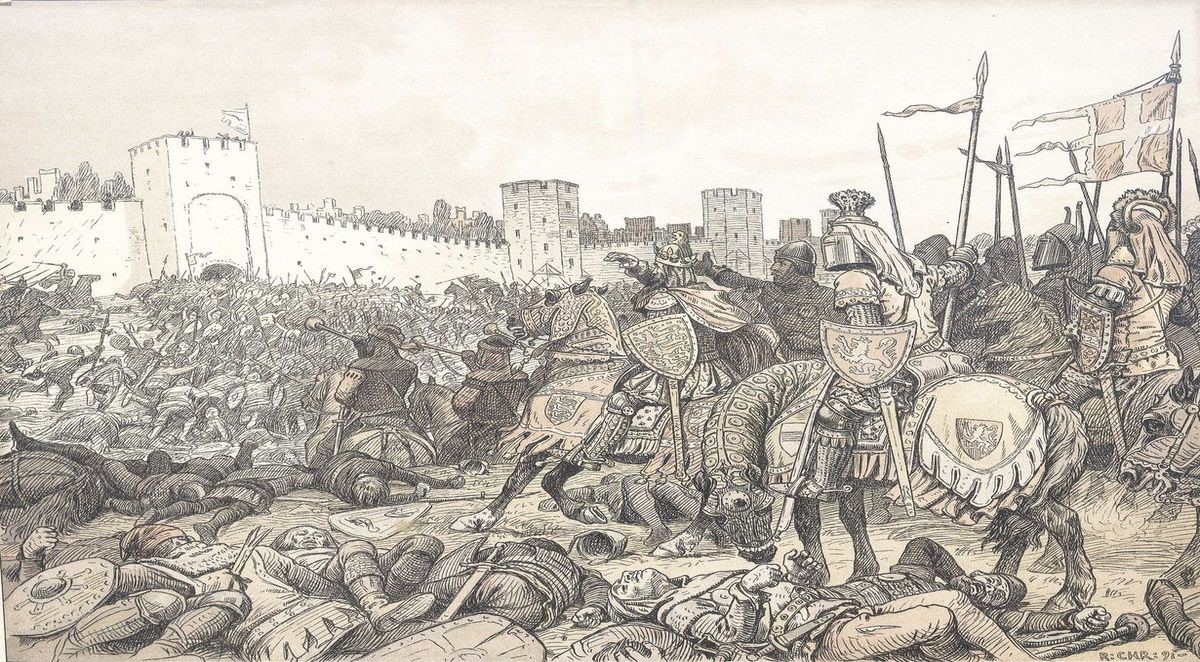
The Dutch–Hanseatic War was a significant conflict that shaped European trade and politics in the late Middle Ages. This war, fought between the burgeoning Dutch maritime powers and the Hanseatic League, a powerful commercial and defensive confederation of merchant guilds and market towns, had far-reaching consequences. Why did this war start? The primary cause was the competition for control over lucrative trade routes and economic dominance in the Baltic Sea region. Both sides sought to protect their commercial interests and expand their influence. What were the key events and outcomes? From naval battles to strategic alliances, the Dutch–Hanseatic War saw numerous pivotal moments that altered the course of history. This blog post will delve into 25 fascinating facts about this historical conflict, shedding light on its causes, major events, and lasting impact.
Key Takeaways:
- The Dutch–Hanseatic War was a 15th-century conflict between the Dutch and the Hanseatic League over trade routes. It led to the rise of Amsterdam as a trading hub and changed the balance of power in Northern Europe.
- Economic interests and naval power played a crucial role in the Dutch–Hanseatic War, shaping the future of European trade and paving the way for new trading entities and alliances.
Origins of the Dutch–Hanseatic War
The Dutch–Hanseatic War was a conflict that took place in the late 15th century. It involved the burgeoning Dutch maritime powers and the established Hanseatic League, a powerful commercial and defensive confederation of merchant guilds and market towns in Northwestern and Central Europe.
- The war began in 1438 and lasted until 1441.
- The Hanseatic League was a dominant force in Northern European trade during this period.
- The Dutch sought to break the Hanseatic monopoly on trade routes and markets.
- The conflict was primarily naval, with both sides engaging in sea battles.
- Economic interests were the main driving force behind the war.
Key Players in the Conflict
Several important figures and entities played crucial roles in the Dutch–Hanseatic War. Understanding these key players helps to grasp the dynamics of the conflict.
- The Hanseatic League consisted of over 70 cities, including Lübeck, Hamburg, and Bremen.
- The Dutch side was represented by various cities, most notably Amsterdam and Rotterdam.
- Philip the Good, Duke of Burgundy, supported the Dutch efforts against the Hanseatic League.
- The Hanseatic League had strong ties with the Holy Roman Empire.
- The conflict saw the involvement of privateers and mercenaries on both sides.
Major Battles and Events
The Dutch–Hanseatic War featured several significant battles and events that shaped the course of the conflict. These encounters were pivotal in determining the eventual outcome.
- The Battle of the Ems in 1438 was one of the first major naval engagements.
- The Siege of Kampen in 1440 was a critical event where the Dutch forces captured a key Hanseatic city.
- The Battle of the Sont in 1441 saw a decisive Dutch victory, weakening the Hanseatic League's naval power.
- The Treaty of Copenhagen in 1441 marked the end of the war, with favorable terms for the Dutch.
- The war led to the decline of the Hanseatic League's dominance in Northern European trade.
Economic and Political Impact
The Dutch–Hanseatic War had far-reaching economic and political consequences. These effects were felt long after the conflict ended.
- The Dutch gained greater access to Baltic trade routes, boosting their economy.
- The Hanseatic League's influence waned, leading to a shift in the balance of power in Northern Europe.
- The war contributed to the rise of Amsterdam as a major trading hub.
- The conflict encouraged the Dutch to develop a more robust naval fleet.
- The decline of the Hanseatic League paved the way for other emerging European powers.
Legacy of the Dutch–Hanseatic War
The legacy of the Dutch–Hanseatic War is evident in various aspects of European history and development. The war's outcomes influenced future conflicts and trade practices.
- The war demonstrated the importance of naval power in securing economic interests.
- It highlighted the shifting dynamics of European trade and commerce during the late Middle Ages.
- The conflict set a precedent for future maritime wars between emerging and established powers.
- The decline of the Hanseatic League allowed for the rise of new trading entities and alliances.
- The Dutch–Hanseatic War is remembered as a turning point in the history of Northern European trade.
The Dutch–Hanseatic War's Legacy
The Dutch–Hanseatic War left a lasting impact on European trade and politics. This conflict, which pitted the Dutch against the Hanseatic League, reshaped alliances and economic powerhouses. The Dutch Republic emerged stronger, gaining control over crucial trade routes and ports. Meanwhile, the Hanseatic League saw its influence wane, marking the beginning of its decline.
Understanding this war helps us appreciate the complexities of medieval European politics and economics. It highlights how conflicts over trade can alter the course of history. The war also underscores the importance of maritime power in shaping nations' destinies.
By examining these historical events, we gain insights into the forces that have shaped our modern world. The Dutch–Hanseatic War serves as a reminder of the ever-changing dynamics of power and commerce.
Frequently Asked Questions
Was this page helpful?
Our commitment to delivering trustworthy and engaging content is at the heart of what we do. Each fact on our site is contributed by real users like you, bringing a wealth of diverse insights and information. To ensure the highest standards of accuracy and reliability, our dedicated editors meticulously review each submission. This process guarantees that the facts we share are not only fascinating but also credible. Trust in our commitment to quality and authenticity as you explore and learn with us.
